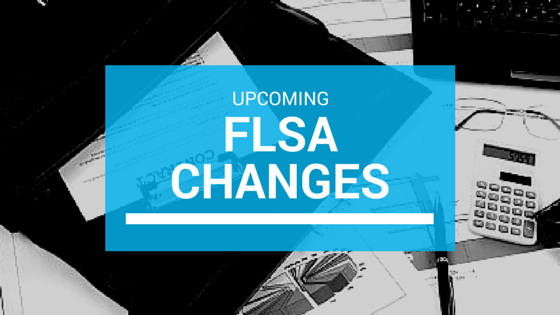
On May 18, 2016, the U.S. Department of Labor published the long awaited rule and update to the “white collar” overtime exemption. Over the past couple of years, the Labor Department has been reviewing the current overtime regulations to assess the need for any changes and adjustments.
This decision, which goes into effect December 1, 2016, is estimated to impact 4.2 million “white collar” workers.
New “Standard” Salary Level – $47,476
The biggest and most impactful change being made raises the minimum salary level for “white collar” (executive, administrative and professional personnel) exemptions under the Fair Labor Standards Act. The final rule raises the minimum salary level from $455.00 per week (or $23,660.00 per year) to $913.00 per week (or $47,476.00 per year).
This rate change was established based on the 40th percentile of earnings of full-time salaried workers in the lowest wage census region of the U.S. Anyone earning below that threshold will not fall under the “white collar” exemptions for overtime pay. This ruling permits any additional compensation such as bonuses and/or commissions to satisfy up to 10% of the minimum salary level.
This additional compensation must be paid at least quarterly and may include nondiscretionary bonuses and/or commissions. This change requires employers to pay exempt employees at least 90% of the minimum salary level per week.
New Highly Compensated Employees Test
Highly compensated employees are also exempt from overtime. However, the minimum salary level to qualify under the new regulation is increasing from $100,000.00 to $134,000.00. This represents the 90th percentile of full-time salaried workers nationally.
To satisfy the requirements of the highly compensated employee test, employees must be paid a minimum guaranteed salary of $913.00 per week. The shortfall mechanism described above cannot be applied to employers who rely on the highly compensated employee test. However, for compensation paid in excess of the minimum $913 per week, the regulations remain unchanged that bonuses or other incentive payments can be used to establish the $134,000.00 per year required salary. Stated slightly different, additional compensation of up to $86,528.00 in the forms of bonuses, commissions or incentives can be used to satisfy the highly compensated employee test.
Main Changes
The main changes presented in this rule relate to the minimum salary levels that apply to the “white collar” overtime exemptions along with the formulas for calculating and increasing these levels.
No Changes
No changes were made to the exemptions for outside sales professionals, teaches, lawyers or doctors. Most noted, the ruling does not change the duties test. As such, the threshold duties required of exempt employees covered by the “white collar” exemption must still be met. There were no changes to either the definition of the primary duty nor the concurrent duties provisions. Thus, no changes were made to the salary basis test under the F.L.S.A.
Employees must still be paid a fixed, determined salary that is not subject to reductions due to the variations in the quality or quantity of work produced.
Next Steps for Employers
In preparation for these changes, employers need to review their current salary levels and compensation plans for all exempt employees to determine whether the new salary requirements will be met.
Upon this review, a decision will need to be made as to whether to reclassify identified individuals from overtime exempt to overtime eligible and thus need to develop a comprehensive plan to include:
- Determine new hourly rates for impacted employees
- Revise or update current timekeeping programs and policies to reflect the change
- Budget your payroll accordingly
- Implement training for both Managers and Employees highlighting all impacted changes
For further information or to assist you and your organization with this change, contact Treyburn Human Resources Group:
Contact Form
(972) 895-2464
info@treyburnhr.com
Download our FLSA Assessment Guide
To help your business stay compliant, download our FLSA Assessment Guide.
